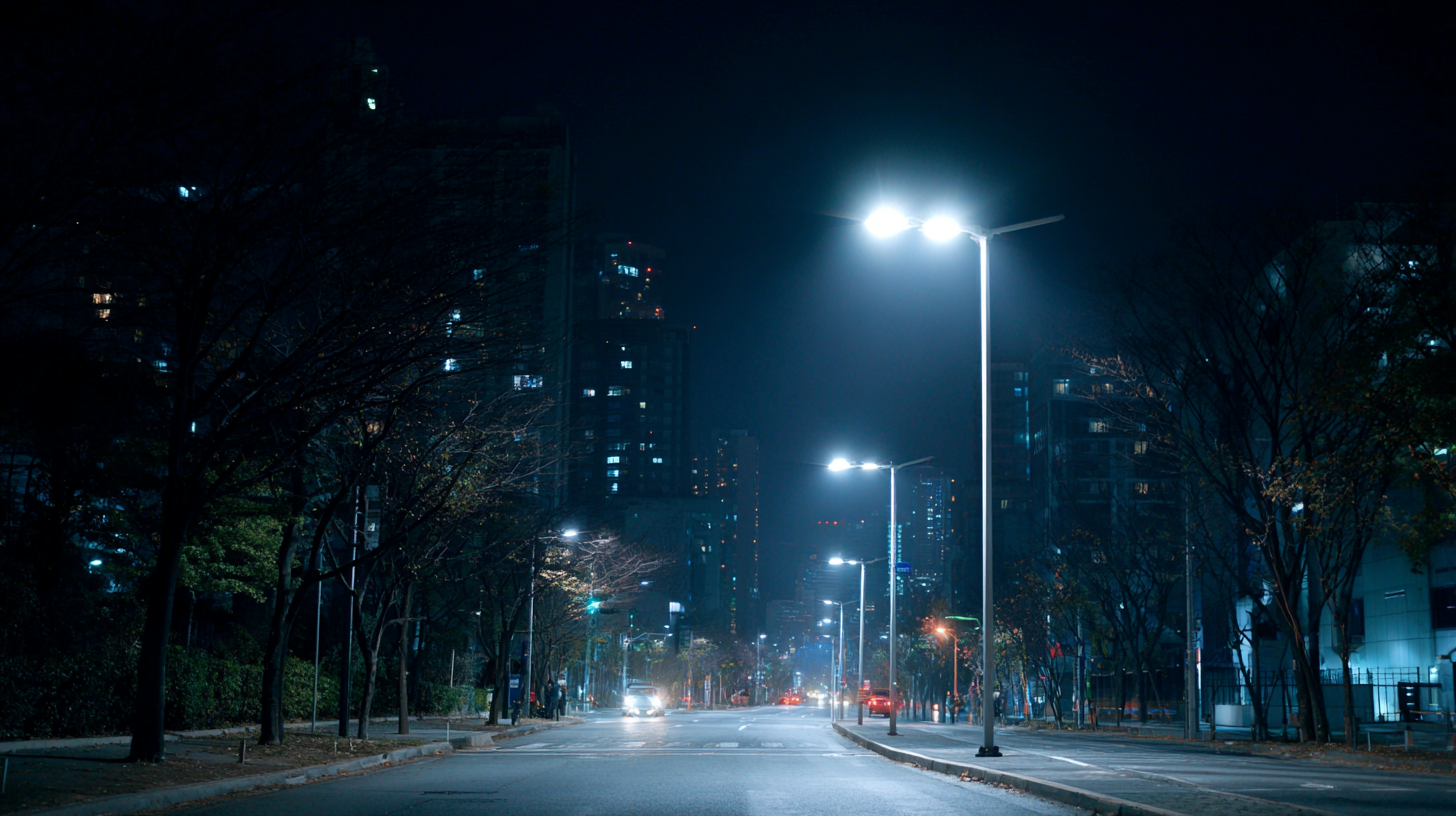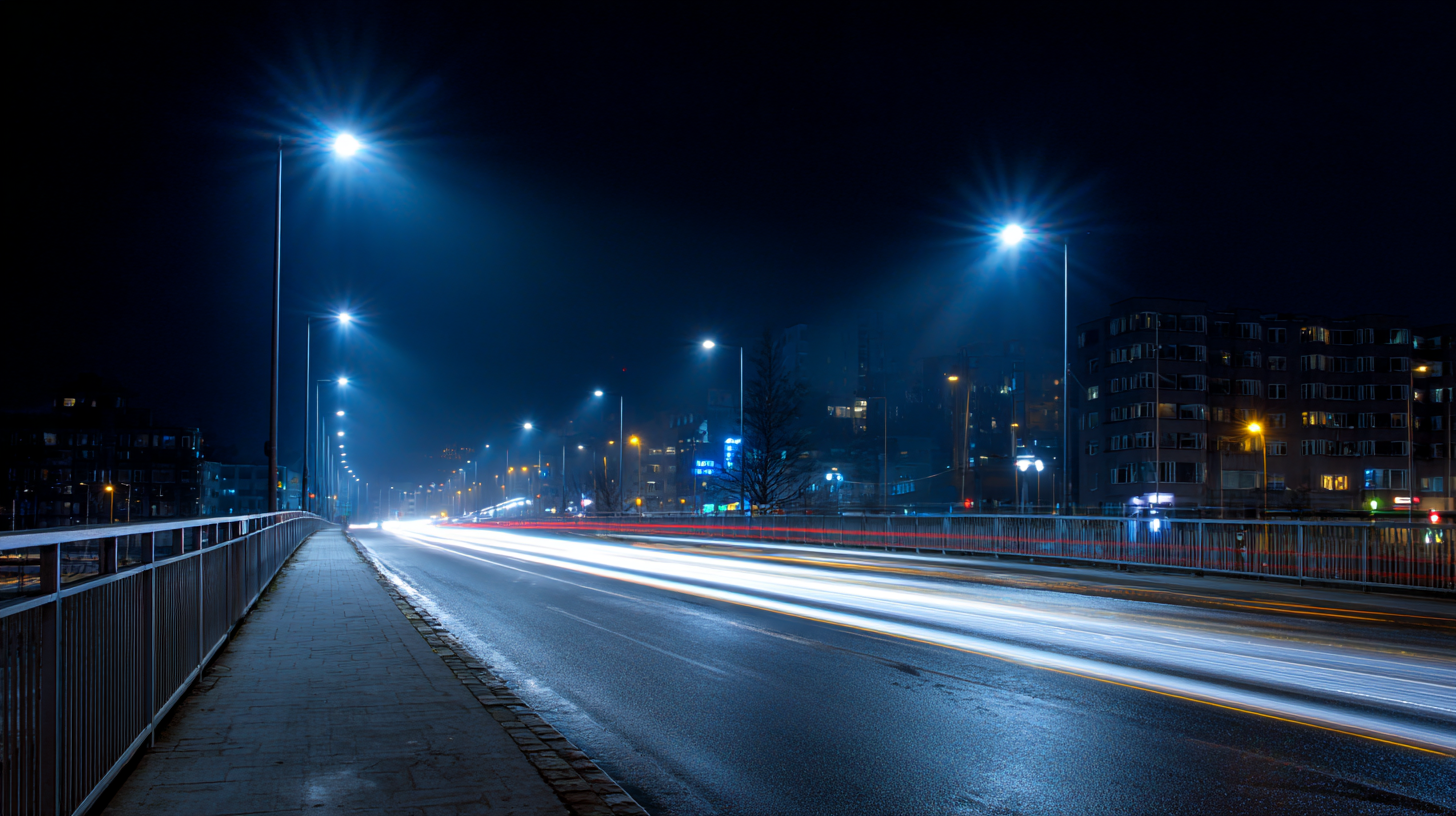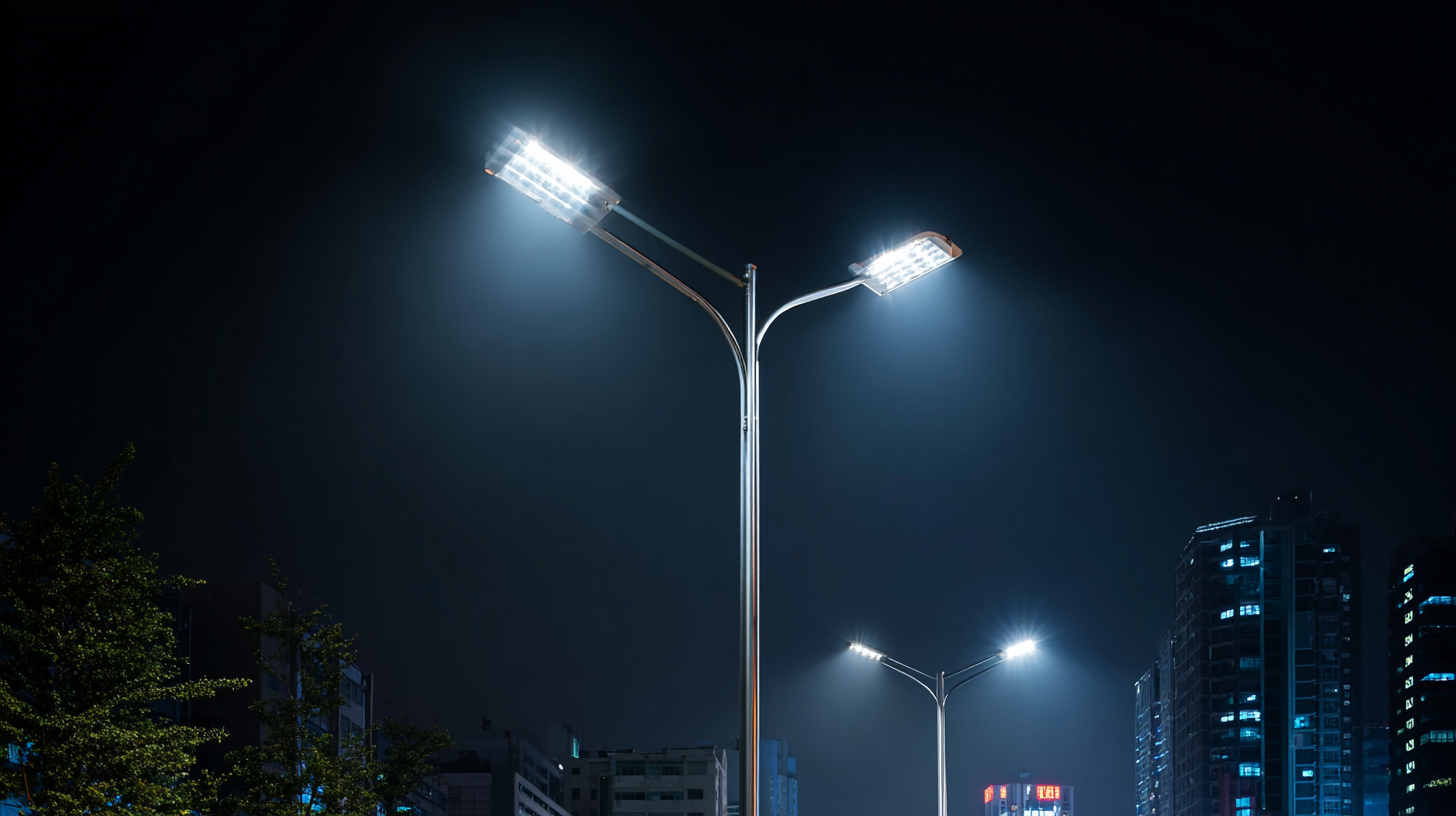How Smart Street Lights Are Revolutionizing Urban Safety and Energy Efficiency
As urban populations continue to swell, cities face the dual challenge of enhancing safety and improving energy efficiency. According to a recent report by the International Energy Agency, street lighting accounts for nearly 19% of global electricity consumption in urban areas, underscoring the urgent need for modernization.
 Smart street lights, equipped with sensors and connected to IoT (Internet of Things) networks, are emerging as a transformative solution. By integrating adaptive lighting technology, cities can reduce energy usage by up to 50% while simultaneously increasing public safety through improved visibility and real-time monitoring.
Smart street lights, equipped with sensors and connected to IoT (Internet of Things) networks, are emerging as a transformative solution. By integrating adaptive lighting technology, cities can reduce energy usage by up to 50% while simultaneously increasing public safety through improved visibility and real-time monitoring.
Furthermore, a study published by the Urban Institute indicates that well-lit streets significantly reduce crime rates, illustrating the impact of smart street lighting on community safety. As cities strive for sustainability and security, the evolution of street light technology stands at the forefront of urban innovation, promising to reshape our urban landscapes for the better.
Transforming Urban Landscapes: The Rise of Smart Street Lighting Systems
The rise of smart street lighting systems is drastically transforming urban landscapes, merging technology with energy efficiency and safety. According to a report by the International Energy Agency (IEA), cities can save up to 50-70% on energy costs by replacing traditional streetlights with smart LED alternatives. These systems not only enhance visibility but also utilize sensors to adjust brightness based on real-time conditions, offering a more responsive approach to urban lighting.
In addition to energy savings, the integration of smart technologies contributes to urban safety. A study by the Lighting Research Center found that well-lit streets can reduce crime rates by up to 20%. Smart street lights equipped with cameras and sensors provide valuable data, allowing municipalities to monitor traffic flow and identify areas with high incident rates. This proactive approach not only addresses immediate safety concerns but also promotes community well-being, ultimately making cities more livable and secure.

Enhancing Public Safety: How Smart Lights Deter Crime in Cities
Smart street lights are transforming urban environments into safer, more energy-efficient spaces. Central to their impact is the ability to deter crime through innovative technology. Equipped with sensors and surveillance cameras, these lights can detect unusual activities and automatically alert law enforcement. The enhanced visibility they provide during the night not only discourages potential criminals but also offers a comforting presence for residents, making them more likely to utilize public spaces after dark.
Furthermore, smart street lights can adjust their brightness based on pedestrian and vehicle presence, optimizing energy use while maintaining safety. By dimming when areas are unoccupied and brightening when motion is detected, they create a well-lit environment that adapts in real-time to changing conditions. This functionality not only contributes to energy efficiency but also promotes community engagement and a sense of security. In cities implementing smart lighting solutions, residents report feeling safer and more inclined to engage with their neighborhoods, illustrating the profound impact of technology on urban safety.
How Smart Street Lights Are Revolutionizing Urban Safety and Energy Efficiency
| City | Smart Light Technology Used | Reduction in Crime Rate (%) | Energy Savings (%) | Installation Year |
|---|---|---|---|---|
| City A | LED + IoT Sensors | 30 | 60 | 2020 |
| City B | Smart LED + AI | 25 | 55 | 2019 |
| City C | Solar-Powered LEDs | 20 | 50 | 2021 |
| City D | Connected Smart Bulbs | 15 | 45 | 2022 |
| City E | Smart Control Systems | 18 | 52 | 2023 |
Energy Savings: Quantifying the Efficiency Improvements from Smart Lighting
The advent of smart street lighting technology is marking a significant shift in urban safety and energy efficiency. Research indicates that cities can save up to 50% on energy costs by implementing smart lighting systems, which utilize LED technology and adaptive lighting controls. According to a report by the International Energy Agency (IEA), transitioning to LEDs in street lighting has the potential to cut global energy consumption by 30% in 2030, translating to savings of around 26 terawatt-hours annually.
Moreover, smart street lights equipped with sensors and connectivity can adjust their brightness based on pedestrian and vehicular traffic. A study published by the American Council for an Energy-Efficient Economy (ACEEE) found that these dynamic lighting systems not only enhance visibility and safety but also reduce energy use by 25-40% compared to traditional streetlights. This technology not only promotes safer urban environments but also supports sustainability initiatives by significantly lowering cities' carbon footprints. As urban centers continue to grow, the push for energy-efficient solutions like smart street lighting becomes increasingly critical for fostering healthier, safer, and more sustainable communities.
How Smart Street Lights Are Revolutionizing Urban Safety and Energy Efficiency
This chart illustrates the energy savings achieved by implementing smart street lighting systems in urban areas. The data highlights the percentage reduction in energy consumption over three years, showcasing the potential for increased efficiency and safety in cities.
Data-Driven Insights: The Impact of Smart Street Lights on Urban Planning
Smart street lights are transforming urban landscapes by harnessing data-driven insights that enhance safety and energy efficiency. According to a report by the International Energy Agency (IEA), smart lighting systems can reduce energy consumption by 50% to 70% compared to traditional street lighting. This significant reduction not only leads to lower operational costs for cities but also contributes to sustainability goals by decreasing urban carbon footprints.
Moreover, the integration of sensors and IoT technology in smart street lights provides valuable data that urban planners can leverage. A recent study by McKinsey states that cities equipped with smart street lighting systems can improve traffic flow by up to 30% through better illumination and real-time monitoring. This data aids in identifying high-crime areas, allowing municipalities to allocate resources more effectively and enhance public safety. As urban areas continue to grow, the role of smart street lights will become increasingly vital in creating safer, more efficient cities.
Sustainability Goals: The Role of Smart Lighting in Reducing Carbon Footprint
 Smart street lights are playing a pivotal role in advancing sustainability goals, notably through their ability to significantly reduce urban carbon footprints. According to a recent report by the International Energy Agency, smart lighting systems can lead to energy savings of up to 50% when compared to traditional street lighting. These systems leverage adaptive lighting technologies, such as LEDs and motion sensors, to optimize energy consumption, thus reducing greenhouse gas emissions in urban environments. The integration of these systems not only addresses the need for enhanced public safety but also propels cities towards their climate targets.
Smart street lights are playing a pivotal role in advancing sustainability goals, notably through their ability to significantly reduce urban carbon footprints. According to a recent report by the International Energy Agency, smart lighting systems can lead to energy savings of up to 50% when compared to traditional street lighting. These systems leverage adaptive lighting technologies, such as LEDs and motion sensors, to optimize energy consumption, thus reducing greenhouse gas emissions in urban environments. The integration of these systems not only addresses the need for enhanced public safety but also propels cities towards their climate targets.
Moreover, smart street lights can be connected to renewable energy sources, further amplifying their contribution to sustainability. A study conducted by the Global Lighting Association found that when cities implement smart street lighting, they see an average reduction of 30% in their total energy use within the first year. This shift not only conserves energy but also lowers municipal costs, allowing funds to be redirected to other essential urban projects.
Tips:
Install smart street lights equipped with sensors to adjust brightness based on traffic flow, ensuring energy is only used when needed. Additionally, consider integrating solar panels into lighting infrastructures to utilize renewable energy, enhancing the sustainability of urban areas even further.
Related Posts
-

The Evolution of Solar Lamps: Illuminating a Sustainable Future
-

Global Street Light Market Outlook and Trends for the Next Decade
-

Discover the Future of Solar Lamp Innovations at the Global Sourcing Hub of the 137th Canton Fair
-

Addressing Common Issues Faced by Buyers: Navigating the Best Solar Lamp Market
-

How Solar Lamps Are Revolutionizing Outdoor Spaces and Saving Energy in 2023
-

7 Best Solar LED Lights to Brighten Your Outdoor Spaces This Year
